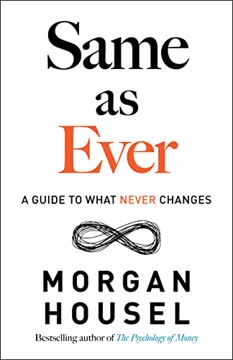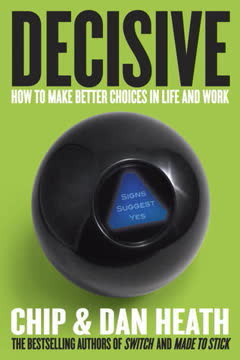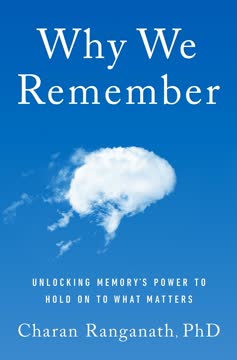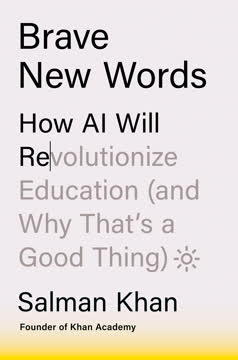Key Takeaways
1. Perception is shaped by our bodies and abilities, not objective reality.
While we go about our days with the commonsense assumption that everybody experiences the same world, perception research says that experiential reality—the world you see, hear, feel, smell, and taste—is unique to each individual.
Subjective experience. Our perception of the world is not a direct reflection of objective reality, but rather a construction shaped by our individual bodies, abilities, and experiences. This means that each person lives in their own unique "Umwelt," a term coined by biologist Jakob von Uexküll to describe an animal's subjective experience of its environment.
Examples of subjective perception:
- Hills appear steeper to those who are tired or out of shape.
- Distances seem longer to those who are obese.
- Softballs appear larger to batters with higher batting averages.
Implications for understanding others. Recognizing the subjective nature of perception is crucial for understanding why people may have different opinions or beliefs, even when presented with the same information. It encourages empathy and a willingness to consider alternative perspectives.
2. Motor development in infancy shapes our understanding of the world.
As children develop, they first discover that the world is filled with gum-able things that, as time goes by, maybe turn out to also be graspable, throw-able, roll-able, or pliable things.
Learning through action. Infants and toddlers learn about the world through active exploration and the development of motor skills. Crawling, walking, grasping, and manipulating objects provide crucial sensory and motor experiences that shape their understanding of space, objects, and their own abilities.
The visual cliff experiment. Gibson and Walk's visual cliff experiment demonstrated that infants can perceive depth as soon as they can crawl, highlighting the link between motor development and perceptual awareness. Campos's research further showed that crawling experience is necessary for understanding the implications of depth.
Sticky mittens and infant walkers. Studies using "sticky mittens" and infant walkers have shown that providing infants with early motor experiences can accelerate their cognitive development, enhancing their object exploration skills and spatial awareness. These studies highlight the importance of agency and self-produced locomotion in learning.
3. Walking is central to the human experience, influencing perception and well-being.
Not only is conscious awareness of slant exaggerated, but it is also malleable in that it is affected by people’s physiological potential: Hills look steeper to people who are encumbered, tired, of low fitness, elderly, or in declining health.
Bipedalism and endurance. Humans evolved to be bipedal endurance animals, capable of walking and running long distances. This evolutionary history has shaped our bodies and our perception of the world, particularly our perception of walkable environments.
Energy expenditure and slant perception. The perceived slant of hills is influenced by the energy required to ascend them. Hills appear steeper to those who are encumbered, tired, or out of shape, reflecting the brain's need to manage the high bioenergetic costs of walking.
Walking and well-being. Walking and running have deep links to wellness, with studies showing that "forest bathing" and running can reduce stress and improve mental health. Conversely, a lack of exercise can lead to health risks, such as obesity and diabetes, highlighting the importance of maintaining an active lifestyle.
4. Grasping shapes our perception, influencing how we see and interact with the world.
It is, therefore, in the public’s interest to determine the factors that can lead to accidental shootings as well as measures to reduce the impact of these factors.
Hands as instruments of knowledge. Our hands are primary physical interfaces with the world, allowing us to manipulate objects and explore their properties. This manipulative ability shapes our perception and understanding of the world, influencing how we think and feel.
The "how" and "what" systems. Goodale and Milner's research on vision has revealed that humans have two distinct visual systems: a "what" system for conscious awareness and a "how" system for guiding actions. The "how" system is more accurate and less susceptible to illusions, highlighting the importance of action in shaping perception.
Tool use and perception. The tools we use can alter our perception of the world. Studies have shown that wielding a gun can increase the bias to see guns, while using a tool to extend reach can shorten perceived distances. This demonstrates how our actions and abilities shape our perceptual experience.
5. Thinking is embodied, influenced by physiological states and feelings.
Thus if one just keeps on walking, everything will be all right.
Beyond the computational theory of mind. Thinking is not solely a function of the brain, but is also influenced by our physiological states and feelings. Our bodies provide a constant stream of sensory information that shapes our cognitive processes.
Interoception and decision-making. Interoception, or the ability to sense our own internal states, plays a crucial role in decision-making. Studies have shown that traders who are more accurate at reading their own heartbeats are more profitable, highlighting the importance of "gut feelings" in complex decision-making.
Bioenergetics and thought. Thinking requires energy, and our cognitive processes are influenced by our caloric reserves and physical fitness. Studies have shown that blood sugar levels and physical fitness can affect future discounting and distance perception, demonstrating the link between physiology and cognition.
6. Emotions are embodied evaluations that shape our perceptions and actions.
Morality, therefore, is more properly felt than judged of.
Emotions as police officers. Emotions serve as "police officers of the mind," guiding our behavior by signaling what is good or bad. These emotional signals are rooted in our evolutionary history and are often linked to physiological responses, such as changes in heart rate or muscle tension.
Disgust and conservatism. Research has shown that people who are easily disgusted tend to be more politically conservative, suggesting that our moral and political beliefs are grounded in embodied feelings of disgust. This highlights the role of emotions in shaping our perceptions and actions.
Emotions and perception of space. Our emotional state can influence our perception of space, with heights appearing higher when we are afraid and hills appearing steeper when we are sad. This demonstrates how our emotions can color our perceptual world, shaping our experience of the environment.
7. Language is grounded in embodied experience, shaping how we think and feel.
Above all, do not lose your desire to walk. Every day, I walk myself into a state of well-being & walk away from every illness.
Mouth-hand parallelism. The sounds of words are often related to the physical actions and sensations they represent. For example, words for small objects are often articulated with a closed mouth, while words for large objects are articulated with an open mouth.
Gestures and thought. Gestures are not merely decorative additions to speech, but rather integral to the speaking process itself. Gestures can help us think and communicate more effectively, particularly when dealing with embodied concepts.
Embodied metaphors. Abstract concepts are often understood through metaphors that link them to concrete experiences. For example, we understand time as distance ("a long time") and emotions as physical states ("feeling up" or "feeling down"), highlighting the embodied nature of language and thought.
8. Social connection is essential for health and well-being, shaping our perception of risk.
Thus if one just keeps on walking, everything will be all right.
Social isolation and mortality. Social isolation is a major risk factor for illness and death, with studies showing that people with few social ties have a higher mortality rate than those who smoke or are obese. This highlights the importance of social connection for health and well-being.
Hand-holding and threat response. Research has shown that holding the hand of a loved one can reduce activity in brain regions associated with threat, demonstrating the power of social support to regulate our emotional responses.
Social baseline theory. Social baseline theory proposes that humans evolved to expect social support and that our brains are wired to function optimally in a social context. This theory suggests that our social relationships shape our perception of risk and effort, making challenges seem less daunting when we have support from others.
9. Group identity shapes our perceptions, leading to in-group bias and out-group otherization.
The way we look at it is, we need vision to represent the world to make plans, choose between goals, talk about plans and goals.
In-group bias. People tend to favor members of their own group and view them more positively than members of out-groups. This in-group bias can influence our perceptions, judgments, and behaviors, leading to discrimination and prejudice.
The "other race effect." People have a tougher time recalling or recognizing the faces of people who belong to other ethnic groups, as if the social categories put some kind of opaque filter on perception and memory.
Deindividuation and stereotypes. When we see people as members of a group rather than as individuals, we are more likely to rely on stereotypes and make biased judgments. This deindividuation can lead to prejudice and discrimination, particularly when combined with cultural assumptions about race.
10. Culture shapes our perception and thinking styles, influencing how we interact with the world.
The affordances of the environment are what it offers the animal, what it provides or furnishes, either for good or ill.
Analytic vs. holistic thinking. Cultures differ in their dominant thinking styles, with Western cultures tending to be more analytic (focusing on individual objects and categories) and Eastern cultures tending to be more holistic (focusing on relationships and context).
Rice theory. Talhelm's "rice theory" proposes that agricultural practices, such as rice farming, have shaped cultural values and thinking styles. Rice farming requires cooperation and interdependence, leading to more collectivist and holistic cultures.
Relational mobility. Cultures also differ in their level of relational mobility, or the ease with which people can form new social relationships. High-mobility cultures tend to be more individualistic and open to strangers, while low-mobility cultures tend to be more collectivist and emphasize long-term relationships.
11. Our Umwelt is shaped by our history, geography, and social interactions.
To see the organism in nature, the nervous system in the organism, the brain in the nervous system, the cortex in the brain is the answer to the problems which haunt philosophy.
The ecological approach. Our perception of the world is shaped by the interplay between our bodies, our environment, and our social interactions. This ecological approach emphasizes the importance of understanding how we fit into our surroundings and how our surroundings afford different opportunities and constraints.
The body as a measure. Our bodies serve as a measuring stick for our perception of the world, with distances, slopes, and object sizes being scaled to our abilities and energy levels. This highlights the embodied nature of perception and the importance of considering our physical selves when understanding our experiences.
The social world. Our social interactions and group identities also shape our perception, influencing how we see and interact with others. By recognizing the subjective nature of perception and the influence of culture, we can gain a deeper understanding of ourselves and the world around us.
Last updated:
Review Summary
Perception receives mostly positive reviews for its exploration of how our bodies shape our minds and perception. Readers praise the book's insights into embodied cognition, fascinating studies, and accessible writing style. Some criticize its occasional disjointedness and political commentary. Many found the book thought-provoking, highlighting concepts like how physical fitness affects distance perception and how cultural backgrounds influence worldviews. While some felt certain sections were stronger than others, overall the book is seen as an engaging introduction to the topic of human perception.
Similar Books










Download PDF
Download EPUB
.epub digital book format is ideal for reading ebooks on phones, tablets, and e-readers.




